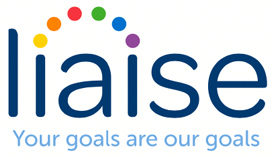Everyone deserves to feel heard and understood. But for many people – especially those living with autism, learning disabilities or certain physical health conditions such as hearing or visual impairments – communicating with others can be challenging at times.
Thankfully, it’s never too late to learn new tips for communicating better with people from all walks of life. This short guide will provide tips and advice on ways to become a better communicator and how you make yourself understood.
This advice doesn’t just apply to the health and social care sector, you can use these tips to overcome barriers to communication in all aspects of your life.
Different Types of Communication Challenges
Many health conditions and developmental disabilities affect the way we communicate. Communication challenges range from not being able to pronounce some sounds correctly to being completely unable to speak in the traditional sense or understand speech.
Some communication barriers can result from the following health conditions:
- Hearing disorders and deafness
- Voice problems, such as dysphonia
- Language disorders
- Learning disabilities
- Developmental disabilities
- Autism
- Dementia
- Brain injury
- Stroke
Different Ways of Communicating
There are countless ways of communicating and connecting with other people through touch, speech, gesture, movement, sound and electronic aids.
Here are some of the main ways of communicating:
Using Touch
- Braille – is a way of reading a language by touching raised dots.
- Block Alphabet – block capital letters are spelt onto the palm of someone’s hand.
- Deafblind Manual – words and sentences are spelt onto someone’s hand using individual letter signs.
- Tadoma – is lipreading by touch.
- Hand-under-hand signing – describes two people signing together using touch.
Using Signs
- Sign language – communicating through hand gestures, facial expressions and movements.
- Makaton – a simpler version of sign language.
- Visual framing signing – a form of sign language for people with reduced vision
- Objects of reference – communicating through the use of physical objects that you hold or touch to represent or identify something else.
Speech
- Clear speech – speaking so that every word, sentence and idea is spoken clearly and simply.
- Lipreading – is understanding speech by observing the speaker’s lip movement.
Tips for Communicating Effectively
Here are some tips to help you effectively communicate with those you support, covering both verbal and non-verbal communication methods.
Verbal Communication
Verbal communication involves using words and sounds to share information with others.
General Tips
- Be mindful of what you say as first impressions are important in gaining trust before a conversation.
- Provide accurate information and clarify any confusion, and if you don’t have the answer, find it and come back as soon as possible.
- Utilise open-ended questions to encourage conversation rather than one-word answers.
- Repeat and rephrase information to aid in understanding.
- Avoid using jargon, slang, and acronyms as they may not be understood by those without specialised knowledge.
Tone and Pace
When communicating, it’s important to ensure that the tone and pace of speech are appropriate for the conversation:
- Speak slowly and clearly – this will ensure that everyone involved in the conversation can understand what you’re trying to say.
- Avoiding mumbling or speaking too quickly to prevent misunderstandings.
- Allow pauses in conversation to let the other person gather their thoughts and convey their feelings.
Clarify Messages
Communication is most effective when you let the other person know that you have understood what they are trying to say:
- It’s best to never assume and always ask. If you’re unsure about something, just ask for clarification. This includes asking someone how they would feel most comfortable communicating.
- To ensure you are understanding what the other person is saying, you can try summarising it. For instance, you could say, “Just to be clear, you meant that…”
Be an Active Listener
Listening can be just as important as expressing our own thoughts or ideas:
- Become an active listener by paying attention to what the other person is saying and providing positive affirmations through nodding, making affirmative noises and using encouraging words.
- Show empathy by understanding and acknowledging the other person’s feelings and thoughts, using the same techniques as active listening.
Non-verbal Communication
There are various non-verbal ways of communicating, including eye movements, facial expressions, hand and arm gestures and posture.
Eye Contact
Our eyes and eye contact can help us express our feelings:
- Short or broken eye contact can indicate nervousness, shyness, or mistrust.
- Long, unbroken eye contact can indicate interest and shows that the listener is paying attention.
Facial Expressions
Facial movements may indicate how a person is feeling and can help you in expressing your own emotions during communication. However, it is important to be aware of how certain facial expressions are perceived so that you don’t mistakenly send the wrong message:
- Smiling makes you seem friendly and approachable and may indicate happiness, comfort, or excitement.
- Be aware that frowning may indicate sadness or displeasure with what the person is saying.
- Looking away while someone is speaking may indicate boredom or a lack of interest.
Posture
Remember that the way you sit or stand can also affect your communication, especially the way you are perceived by others:
- Crossed arms could mean someone is bored, uninterested or angry.
- Leaning forward can mean that someone is engaged and interested in the conversation.
- Facing someone head-on can feel intimidating to some. Standing at a slight angle can show you are relaxed and friendly.
Proximity
Proximity typically refers to how close people are together when communicating and it can affect communication in a variety of ways:
- While close proximity can in certain circumstances demonstrate support or sympathy, it is important to take your cues from the person you are speaking with. Not everyone is comfortable with close proximity and getting too close could make someone feel angry or threatened.
- Pay attention to how the person acts – if they appear agitated or uncomfortable, you may be too close.
- Always ask before encroaching on someone’s personal space. For instance, you could ask, “Do you mind if I sit here?”
Environment
Remember that a person’s environment can also affect their ability to communicate:
- Noise levels – High noise levels can affect somebody’s ability to concentrate. To bring down noise levels try soundproofing rooms, reducing background noise or creating quiet areas simply for talking.
- Lighting – Poor lighting can make it difficult to see non-verbal communication such as eye contact or body language. When communicating with someone, make sure you are facing the light so the other person can see your face, particularly your mouth.
- Privacy – A lack of privacy may cause discomfort and discourage people from expressing their true feelings. Try to avoid sensitive conversations in groups and be discreet and subtle when talking about something that might cause embarrassment.
Our Residential and Supported Living Services
Here at Liaise, we recognise that communication is a fundamental right. At our community-based, residential care and supported living homes, we work hard to ensure every person we support has the assistance and tools necessary to communicate their needs, wants and preferences. We know this encourages independence and promotes confidence and well-being.
Through our years of experience in supporting people with complex and varied needs, we recognise that effective communication allows the people we support to feel seen and heard. Our staff are highly-trained in a variety of communication methods and work closely with Speech and Language specialists to ensure every individual we support can express themselves and engage with the world around them.
Where appropriate, we use the latest communication aids and tools This includes combining high-tech aids with other forms of non-verbal communication, including gestures, facial expressions, pictures and signing. We tailor our communication process to the needs of each individual we support.
We are proud to provide unconditional care and support that suits every need and capability. If you would like to learn more about our care and support services, do not hesitate to call us on 0330 500 5050 or fill out our enquiry form.





